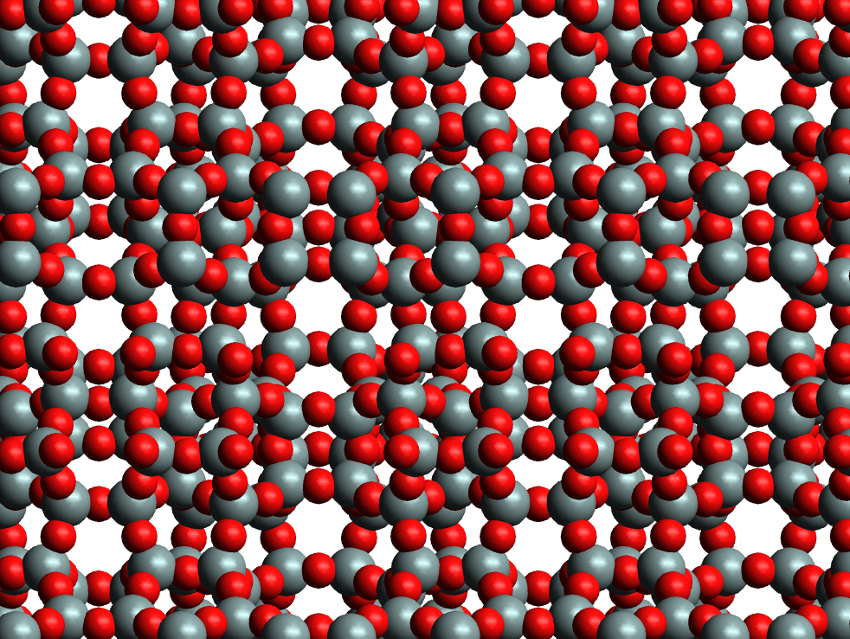Titanium silicalite-1 (TS-1) is a zeolitic material with the structure type MFI (analogous to the common zeolite ZSM-5), in which 1–2 % of the silicon atoms are substituted with titanium atoms. TS-1 catalyzes the epoxidation of propylene with hydrogen peroxide, a reaction used on a large scale in the chemical industry to make propylene oxide. The catalyst has been used for 40 years, but the exact structure of the active site had not been confirmed so far. Until now, the catalytic activity of TS-1 has generally been attributed to isolated Ti(IV) sites within the zeolite framework.
Christophe Copéret, Swiss Federal Institute of Technology (ETH) Zurich, Switzerland, and colleagues have performed a detailed characterization of highly active and selective TS-1 propylene epoxidation catalysts using solid-state 17O NMR spectroscopy, Raman spectroscopy, electron microscopy, and density functional theory (DFT) calculations. The team studied five samples of TS-1, two with a Ti content of 1.9 wt% prepared on different scales, and three samples with Ti loadings of 1.5 wt%, 1.0 wt% and 0.5 wt%, respectively.
The team found a characteristic 17O NMR signature that indicates the presence of non-isolated Ti sites (dinuclear Ti-peroxo species) for all samples. They used DFT calculations to explore reaction mechanisms at such sites and found that dinuclear sites are particularly efficient for propylene epoxidation. Overall, they conclude that dinuclear Ti sites in the zeolite enable an efficient reaction with olefins and could be essential for efficient catalysis. According to the researchers, the findings of this study could help to improve existing catalysts and to develop new homogeneous and heterogeneous catalysts.
- Efficient epoxidation over dinuclear sites in titanium silicalite-1,
Christopher P. Gordon, Hauke Engler, Amadeus Samuel Tragl, Milivoj Plodinec, Thomas Lunkenbein, Albrecht Berkessel, Joaquim Henrique Teles, Andrei-Nicolae Parvulescu, Christophe Copéret,
Nature 2020, 586, 708–713.
https://doi.org/10.1038/s41586-020-2826-3



